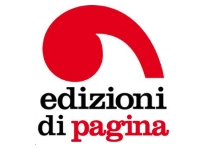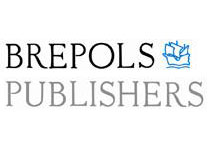Quaestio
Yearbook of the History of Metaphysics
Publication Guidelines
While trying to meet all the new criteria required for international academic Journals and Series, Quaestio intends to preserve a clear graphic layout, which respects the best editorial standards in the European academic tradition.
Contributors are therefore kindly asked to pay particular attention to the accuracy both of the contents and of the formal layout. All the proposals that do not meet the editorial criteria will not be taken into consideration.
Contributors are invited to use in their footnotes the following author-year-page form of abbreviation (example):
Cf. Courtine 1996, p. 25.
Each article must contain a comprehensive final bibliography in which all references are explicated using the rules given below.
The maximum length for each article (spaces are calculated in the overall length) includes the text, notes and bibliography.
Maximum total length (text + notes + bibliography, including spaces): 50,000 characters.
Articles exceeding this length will not be taken into consideration.
1. General instructions / format of the texts
Contributions may be written in English, Italian, French, German, Spanish and Latin (please note that the editors cannot undertake any linguistic editing; all contributions must therefore be double-checked in advance by a reliable native speaker).
A short English summary is required for each contribution, together with essential keywords (up to 8).
All texts must be submitted in their definitive form, ready for print. Texts containing Arabic, Greek or Hebrew terms (or transliterations from Arabic, Greek or Hebrew) should be submitted also as hard copies. We recommend using Unicode fonts for non-Latin alphabets.
Long quotations in the main text should be in a smaller font size and indented by 1 cm on the left and must be placed in quotation marks («…» for Italian, French, Spanish and Latin, “…” for English, „…“ for German).
For the sake of clarity and immediate intelligibility, please always avoid ambiguous abbreviations such as ibid., l.c., op. cit., and stick strictly to the author-year-page form of abbreviation (even in the case of repetitive references).
Only the following abbreviations are accepted: Id., Ead., cf., sqq. (not ff!), p./pp. (pagina/paginae), l./ll. (linea/ lineae).
2. References to articles in Journals [for the final bibliography]:
First Initial of the Author’s first name – period – Author’s last name [CAPS/small caps] – comma – Title [italics] – comma – in – Title of the Journal [italics] – comma – volume, with the year in parentheses – comma – page numbers [preceded by “p.” or “pp.”] – period.
Example: K. Lehmann, Christliche Geschichtserfahrung und ontologische Frage beim jüngen Heidegger, in Philosophisches Jahrbuch, 74 (1966), pp. 126-153.
Please give the page numbers in full (pp. 172-173, and not pp. 172-73).
3. References to contributions in collective volumes or essay collections [for the final bibliography]
First Initial of the Author’s first name – period – Author’s last name [CAPS/small caps] – comma – Title of the article or contribution [italics] – comma – “in” – Editor’s name followed by “(ed. / eds)” or “(Hrsg.)”, “(dir.)”, “(a cura di)”, according to the language of the cited volume – comma – Title of the volume [italics] – comma – Publisher – comma – place and year of publication (not separated by a comma!) – (when relevant, the Series name in parentheses, in plain text) – comma – page numbers – [preceded by “p.” or “pp.”] – period.
Example: J.-F. Courtine, Les Recherches Logiques de Martin Heidegger, de la théorie du jugement à la vérité de l’être, in J.-F. Courtine (dir.), Heidegger 1919-1929. De l’herméneutique de la facticité à la métaphysique du Dasein, Vrin, Paris 1996, pp. 7-31.
• Editor(s), Publisher, place and year of publication must always be indicated.
• The Series name, when relevant, must be placed (in parentheses and in plain text) after the year; the number of the volume in the Series must be separated by a comma. Example: E.J. Brill, Leiden-Kön 2009 (Studien und Texte zur Geistesgeschichte des Mittelalters, 89).
• The Editor’s name should be followed by “(ed. /eds)”, “(a cura di)”, “(dir.)”, “(Hrsg.)” according to the language of the cited volume.
• In the case of 2 or more Authors or Editors, their names should be separated by a slash (with spaces). Example: G. Christianson / T.M. Izbicki (eds), Nicholas of Cusa etc.
• If the Authors or Editors are more than 3, it is possible to use the first 2 names and then the abbreviation: et Al. [CAPS/small caps];
• If Editors are not explicitly indicated, it is possible to use the abbreviation: Aa.Vv. [CAPS/small caps];
• When the places of publication are more than one, they should be separated by a hyphen. Example: W. de Gruyter, Berlin-New York.
• If a volume is a co-edition of 2 (or more) Publishers, please use the following system: F. Van Steenberghen, Introduction à l’étude de la philosophie médiévale, Publications Universitaires, Louvain / Béatrice-Nauwelaerts, Paris 1974.
• Subsequent editions of the same volume should be placed, in superscript, after the year and before the punctuation mark: 19992.
4. References to Monographs or Individual Books [for the final bibliography]
First Initial of the Author’s first name – period – Author’s last name [CAPS/small caps] – comma – Title [italics] – comma – Publisher – comma – place and year of publication (not separated by a comma!) – (when relevant, the Series name in parentheses) – comma – Page numbers [preceded by “p.” or “pp.”] – period.
Example: F.-W. von Herrmann, Wege ins Ereignis. Zu Heideggers Beiträgen zur Philosophie, Klostermann, Frankfurt am Main 1994.
In the case of several authors, more than one Publisher and so on, please observe the same rules given above.
Titles cited within other titles should be in plain text. Example: J.-F. Courtine, Les Recherches Logiques de Martin Heidegger, de la théorie du jugement à la vérité de l’être, etc.
5. Ancient and medieval sources (in the footnotes)
In the case of reference to original sources, the names of ancient and medieval authors (up to the 15th century), should be quoted in Latin (e.g.: Thomas de Aquino, Henricus de Gandavo, Ioannes Duns Scotus). For the accepted spelling, please see the Indices of the Bulletin de Philosophie Médiévale de la S.I.E.P.M.
In the case of recent critical editions, please mention the Editor in the footnotes:
Henricus de Gandavo, Quodlibet VI, q. 1, ed. Wilson, pp. 31-32, ll. 8-95.
The indication of the lines of cited texts follows the page numbers, and is preceded by “l. / ll.”.
Example for the final bibliography:
Henricus de Gandavo, Quodlibet VI, ed. G.A. Wilson, Leuven University Press, Leuven 1987 (Henrici de Gandavo Opera Omnia, 6).
If the quotation is taken from a Renaissance or Early Modern edition, please use in the footnotes the following system [in the case of folia, please always give the indication recto or verso: r / v]: Henricus de Gandavo, Quodlibet V, q. 1, ed. Parisiis 1518, I, f. 150vC.
In the final bibliography, please cite the Publisher:
Henricus de Gandavo, Quodlibeta, vaenundantur ab Iodoco Badio Ascensio, Parisiis 1518, 2 voll.; reprint Bibliothèque S.J., Louvain 1961.
Quotations from manuscripts:
Ioannes Picardi de Lichtenberg, Quaestiones disputatae, q. 19, ms. BAV, Vat. Lat. 859, f. 166va.
Manuscripts should be listed separately in the final bibliography.
Quotations from Plato’s and Aristotle’s works:
Plato, Phaedo, 65A.
Arist., De anima, III, 4, 429a16-18.
6. Footnotes
Notes are to be numbered sequentially. References in the text should be placed within clauses, that is, they should appear before any punctuation mark closing the clause (but after any quotation marks). Example: «[…]»2. Only in the case of question marks and exclamation marks, references to footnotes follow, and do not precede, punctuation marks.
7. Quotation marks
All quotations must be placed in quotation marks, according to the ‘continental’ style («…» for Italian, French, Spanish and Latin, “…” for English, „…“ for German).
To signal quotations within other quotations please use the following systems: «… “…” …» for Italian, French, Spanish and Latin; “… ‘…’ …” for English; „… ,…‘ …“ for German.
Single quotes (‘…’ or ,…‘) are used to signal single terms to be defined or explained.
Example: ‘man’ here stands for…






